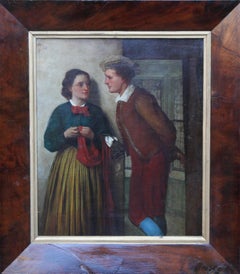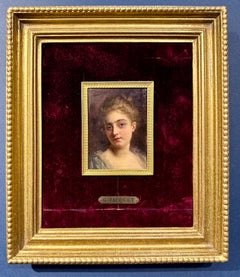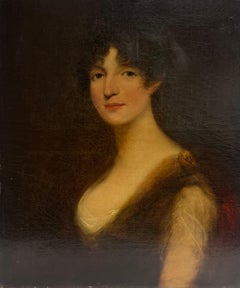William Fettes Douglas Art
William Fettes Douglas was a Scottish painter born in Edinburgh on March 12, 1822. He was also an art connoisseur. Douglas was the eldest son of James Douglas and Martha Brook, grand-niece of Sir William Fettes, the founder of Fettes College. On the completion of his education at the High School of Edinburgh, Douglas worked as a bank clerk in Commercial Bank of Scotland for ten years, in which his father was an accountant. In 1847, Douglas resolved to become an artist. Beyond a few months in the Trustee's Academy, then under Sir William Allan, he did not receive any systematic training, but he disciplined his hand and eye by the care and accuracy of the drawing he did by himself. He also attended the botany and anatomy classes of the university, while at a somewhat later date he painted a good deal in the country with the Faeds and Alexander Fraser, the landscape painter. In 1845, Douglas exhibited for the first time at the Royal Scottish Academy, and soon his pictures attracted such notice that, in 1851, he was elected an associate, and three years later a full member. Some of his finest pictures belong to about this time, such as The Ruby Ring (1853), The Alchemist (1855), Hudibras and Ralph visiting the Astrologer (1856), an incident from Butler's famous work The Rosicrucians (1856), one of his finest things in color and The False Astrologer. The painter's interest in out-of-the-way subjects and his definite leaning to archaeology are visible. Many of them show much of the pre-Raphaelite spirit and are remarkable for wonderfully perfect and detailed handling and rich and beautiful color. He also possessed a wide and accurate knowledge of pictorial art, which fitted him admirably for the curatorship of the National Gallery of Scotland, in which he succeeded James Drummond (1816–1877). Douglas incorporated much of what he knew in the catalog of the gallery. This office Douglas held from 1877 to 1882, when he was elected to the presidential chair of the Royal Scottish Academy, vacant through the death of Sir Daniel Macnee. He was knighted at Windsor onMay 17, 1822, and appointed a member of the Board of Manufactures, while in 1884 the university of Edinburgh conferred the degree of LL.D. upon him. After 1870, Douglas turned more to landscape, and in 1874–75 he produced Stonehaven Harbour and A Fishing Village, which are perhaps the finest pictures that he painted. But for some time after 1879, the effects of a serious illness laid him aside, and when he resumed his art it was to practice in watercolor only. From 1877–82, Douglas served as Principal Curator of the National Gallery of Scotland, being succeeded by Gourlay Steel. His drawings are small in size but very charming, and show a true appreciation of the medium. In the National Gallery of Scotland, he is represented by three characteristic works; South Kensington Museum has The Alchemist, and Glasgow Corporation Galleries Bibliomania. His works are displayed at such notable museums as the National Galleries of Scotland, Harvard University Art Museums, the National Portrait Gallery, Tate Gallery and the Victoria and Albert Museum. William Fettes Douglas died at Newburgh, Fife, on July 20, 1891, but is buried in the south-west spur of Dean Cemetery.
19th Century Victorian William Fettes Douglas Art
Oil
1860s Victorian William Fettes Douglas Art
Oil, Wood Panel
Early 19th Century Victorian William Fettes Douglas Art
Oil
1890s Victorian William Fettes Douglas Art
Canvas, Oil
1870s Victorian William Fettes Douglas Art
Oil
1840s Victorian William Fettes Douglas Art
Oil, Board
Late 19th Century Victorian William Fettes Douglas Art
Oil
Early 1900s Victorian William Fettes Douglas Art
Oil
1890s Victorian William Fettes Douglas Art
Oil, Wood Panel
Early 1900s Victorian William Fettes Douglas Art
Canvas, Oil
Late 19th Century Victorian William Fettes Douglas Art
Oil
19th Century Victorian William Fettes Douglas Art
Oil, Linen
Mid-19th Century Victorian William Fettes Douglas Art
Canvas, Oil


